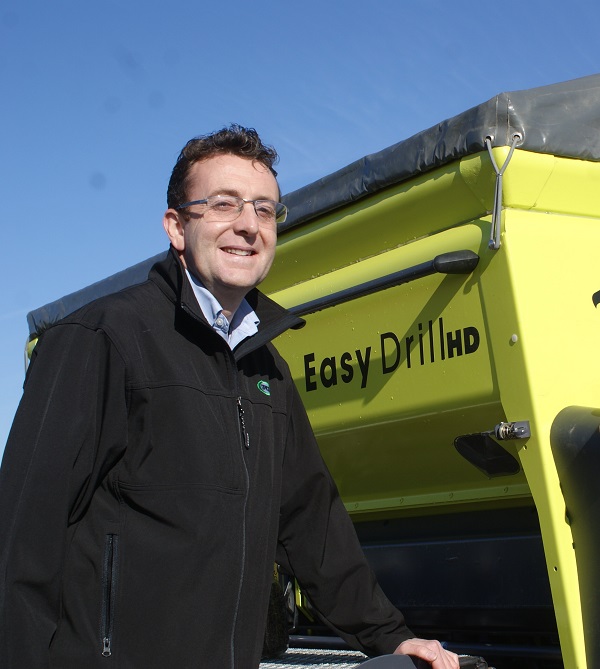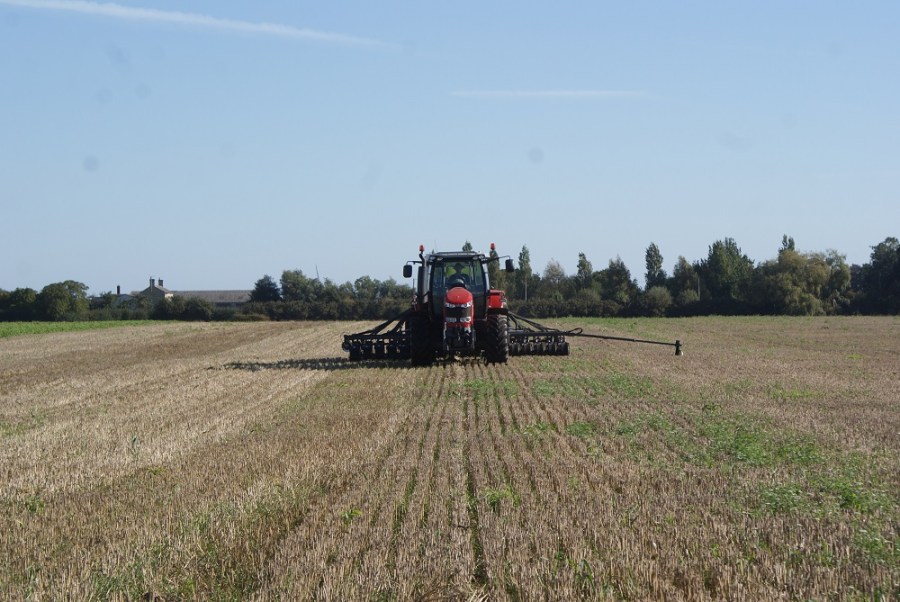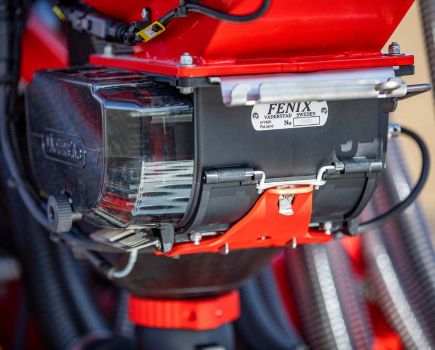While mechanisation has revolutionised farming across the globe, it has arguably come under scrutiny as one of the biggest culprits when it comes to creating carbon emissions. CPM gathers views on ambitions for Net Zero.
How the plough will be viewed in the not too distant future is still unanswered.
By Charlotte Cunningham
If you’re an active Twitter user, you’ll have done well to avoid the debate that seems to have taken over social media regarding agriculture and climate change.
While the industry has taken somewhat of a battering by mainstream media, the NFU – particularly president, Minette Batters – has been flying the flag for farming, leading the proposal of Net Zero by 2040.

Farming efficiently and keeping input costs and emissions low is the focus for Opico, says James Woolway
However, with the ambition to balance the emissions created by agriculture in tandem with the increasing need for greater food production to meet the needs of an expanding population, the industry finds itself in a complex situation.
While the detail is still yet to be uncovered, the NFU has set out three key pillars that it believes will enable the industry to do this and will make up the foundations of the Net Zero plan.
The first of these is productivity, which for the arable sector means getting a good understanding of the carbon cost per tonne of production.
Though many growers may not be au fait just yet in terms of what this cost may look like in terms of a physical value, we can hazard a guess at the fact that overall emissions are going to need to be slashed.
According to leading manufacturers, one of the most obvious ways to cut emissions in machinery is to minimise the amount of work kit is doing – thus giving the same effect as taking a bus instead of driving to work or holidaying in the UK rather than jetting off on a fuel-guzzling aircraft to somewhere exotic.
“Farming efficiently and keeping input costs and emissions as low as possible with one machine performing more than one specific operation is absolutely our focus,” says James Woolway, managing director at Opico.
Single pass equipment is the main focus of things at the moment for the firm, providing a double-edged sword and cutting emissions from reduced passes as well as limiting the emissions associated with soil disturbance.
According to James, despite public perception UK agriculture doesn’t always involve going large. “It’s such a generalisation that all UK farming involves big kit. Of course, kit is getting bigger in some parts of the country, but for many farms, this is not the case.”
“Farmers care passionately about what they do – there’s no one more in tune with the weather, the seasons and the environment than them.”
As well as reducing the number of times a tractor has to be fired up, increasing the accuracy of kit could also have a valuable role to play in contributing to Net Zero.
Among the various contracting jobs carried out by Oxon farmer, Charlie Baker, is digestate spreading via a dribble bar. As chairman of the National Association of Agricultural Contractors, Charlie has carried out a lot of work alongside Defra to look into the benefits boom spreading.
“This not only ensures that the crop gets the nutrients it needs directly, but also reduces the risk of run off and leaching of nitrogen to the atmosphere.
“We want to be able to spread efficiently – if a product is atomising then you’re losing it in the atmosphere and it can travel very far and so by spreading using a dribble bar or injector, we can help reduce ammonia emissions to the atmosphere.”
According to Harry Henderson, technical manager at AHDB, the energy used in crop establishment could be a crucial area for growers to target. “Carbon offsetting is all about the overall power consumption and the amount of soil we’re moving: Is it too much? Are we at risk of increasing such emissions due to the desire to create a ‘perfect’ seed-bed?”
The bigger the kit and the more cultivations means more power consumption and therefore, greater emissions. So to move forward and work towards the Net Zero goal, Harry believes that growers need to take a step back and look at the bigger picture. “Look at what costs you’re putting in and consider what could be dropped – without sacrificing yield.
“However, is yield still king? Should we be chasing every last tonne or can we cut costs and manage yield in different ways which have less of an impact environmentally? From a business perspective managing for gross margin should come before yield alone.”
Regardless of which side of the fence you sit on in the tillage debate, there’s good evidence and arguments to suggest that a minimal disturbance system wouldn’t be suitable for all farms – making it even more difficult for the arable sector, as a whole, to contribute towards Net Zero goals.
So where does this leave farms where the plough is an essential piece of kit? “That’s a good question, and I think it’s going to be led by what the government comes up with in terms of an Agricultural Policy,” says Harry. “Apparently, the policy has no interest in soil care which has dismayed some no-till farmers, but it goes without question that the plough is a useful tool and is very cost effective for some farms.
“It’s a tough one. I can’t see the plough being banned, but I can see that carbon sequestration will be supported – but in which format remains to be seen.
“When farming is driven by Agricultural Policy, how the plough will be viewed in the not too distant future is still unanswered.”
This lack of clarity poses the question: In situations where high-energy, soil-moving kit is still required is there a way of counteracting the subsequent emissions? “There could be scope for a points-type system,” says Harry. “This could allow farmers to use the plough where they need to but ensure they do other things to offset it.
“For example, vegetable growers could set up wildlife areas to offset the use of plough. But this will undoubtedly mean less area for food production, so it’s a bit of a catch 22, at the moment.”
How this would be measured or enforced could be a tricky area though, he adds. “I think it should be more carrot than stick – the stick won’t be favourable unless there’s a carrot behind it.”
Harry also believes that some sort of carbon credit-exchange system could work well. “For example, could an arable farmer in East Anglia exchange carbon credits with a farmer in the Uplands with 50ha of peat bogs?
“Carbon credits exchanged between farms, rather like milk quotas in the late 80’s, could work much better than highly productive fresh produce farms in the eastern counties having land set aside and could be more effective from a global perspective – as well as enabling upland farms to have an important role in reaching targets.”
Though much is still as yet unknown, the debate is one that’s incredibly relevant and needs to be happening, he notes. “It’s good to see an agricultural publication leading the debate, as we should all consider the future and how it’s going to come together.
“I doubt there is a single farmer out there that doesn’t think the environment is important, but it’s a huge technological and financial challenge at the moment. However, it goes without saying that it’s an incredibly interesting time to be in industry.”




